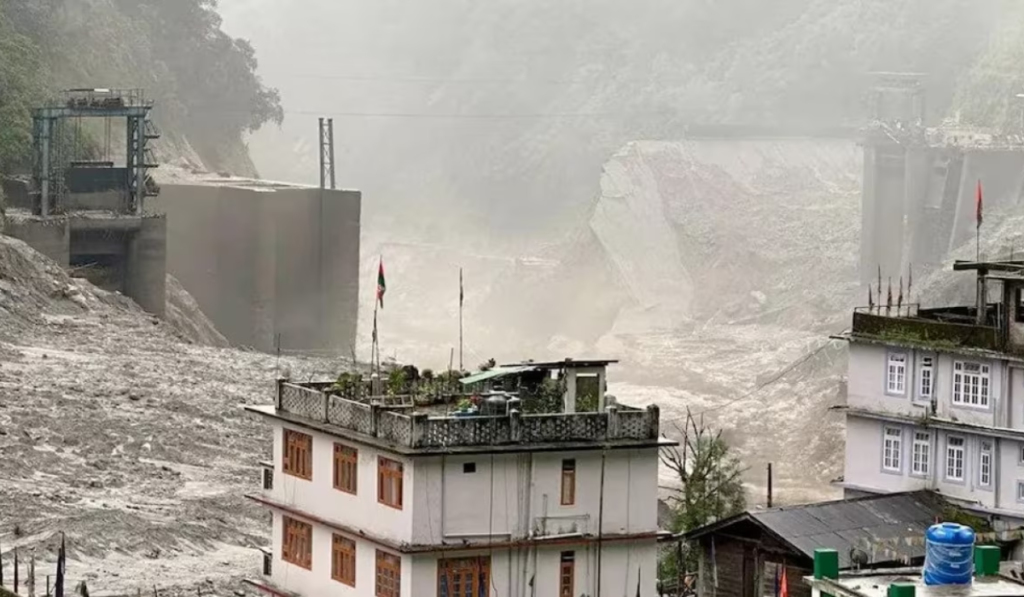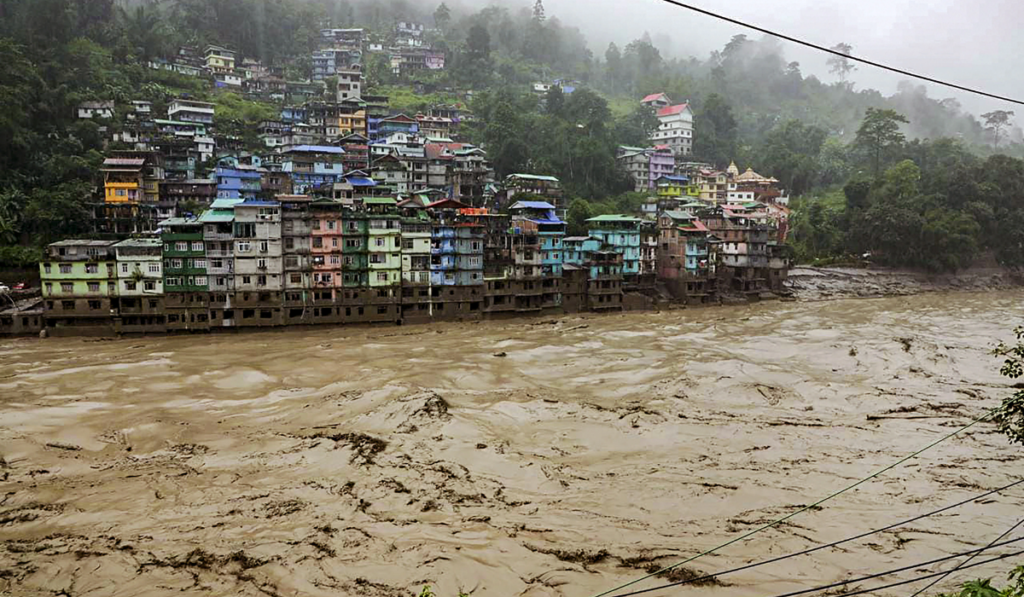The flash floods in Sikkim have claimed the lives of 14 individuals, and the state government has now confirmed that over 100 people are unaccounted for. Among the missing are 22 army personnel, and an additional 26 individuals have sustained injuries and are receiving medical care. These devastating events were set in motion by a cloudburst over Lhonak Lake in northern Sikkim.
While the emergency services were mobilised to the affected areas, chief minister Prem Singh Tamang has advised the public to refrain from unnecessary travel at the moment. Meanwhile, the Sikkim government has also issued helpline numbers for assistance.
A search and rescue operation has been launched for more than 100 missing people in India’s northeast after flash floods ripped through the Himalayan state of Sikkim Wednesday, killing at least 14 people and washing away roads and bridges, according to the state government.
Also Read: Football governing body confirms FIFA Men’s World Cup 2030 to span three continents
Sikkim: Extreme Weather Amidst the Climate Crisis
Referred to as the “roof of the world,” the environmentally delicate Himalayan region is susceptible to sudden floods and landslides, with instances of flooding not being uncommon in Sikkim.
But scientists are clear that extreme weather is becoming more frequent and more intense as the human-caused climate crisis accelerates.

A “sudden cloudburst” over Lhonak Lake, in the northern part of the state, sent fast-moving torrents of water surging down the Teesta River in Sikkim’s Lachen valley, raising water levels 15-20 feet higher than normal, the Indian Army said in a statement. A cloudburst is a very sudden and destructive rainstorm.
Video from the north of the state shows the muddy deluge rapidly overflowing the river and flooded houses caked in dirt and debris.
Dramatic Satellite Images Reveal Drastic Reduction in Lhonak Lake’s Water Volume After Cloudburst
As search efforts continued Wednesday, the Indian Space Research Organization (ISRO) released dramatic images showing the volume of water which had been released from Lhonak Lake following the cloudburst.
Lhonak Lake is a large glacial bullet-shaped water body that sits at the foot of a melting glacier.
Examination of the images reveals that over 60% of the water contained in the lake was released following the intense rainstorm, which led to a glacial lake outburst. This occurrence occurs when a glacial lake either swells to an excessive level or when the surrounding terrain or ice structure collapses, causing the lake to burst and resulting in the rapid flow of water and debris down the mountainside.
One satellite image shows the lake holding about 167.4 hectares of water on September 28, while another dated October 4 shows the lake reduced by more than half – holding approximately 60.3 hectares of water in it.
Also Read: Lucknow: लिफ्ट में फंस गई बच्ची, रो-रोकर बचाने की लगाती रही गुहार, वीडियो वायरल











More Stories
India’s Active Covid-19 Cases Rise Above 2,700; Delhi Records First Fatality
Pak PM: India Fired Brahmos Before Our Retaliation
देहरादून: सूर्यधार रोड पर भिड़ीं गाड़ियां, शख्स को कुचलने की कोशिश; 9 गिरफ्तार